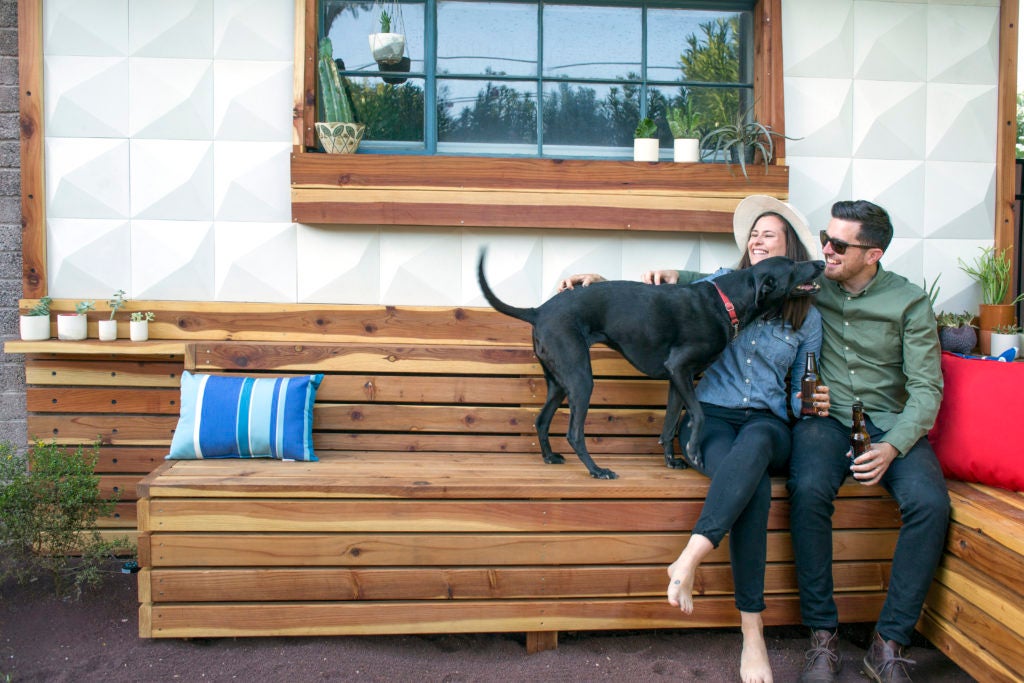Key takeaways
- Your homeowners insurance coverage can help protect your hard-earned money in ways you might not even realize, including covering the cost of a lawsuit, hotel expenses, meteorite damage and more.
- You’re not limited to just what’s in your policy. For more protection, you can purchase coverage add-ons, called endorsements.
- Sometimes your home insurance even covers things that happen when you’re not at home.
You can file a home insurance claim for more scenarios than you may realize. Your home insurance policy isn’t just for bad storms and break-ins; it could also help you out if you lose a suitcase while on vacation, or cover the cost of a hotel if your home sustains major damage or if you’re sued. Bankrate’s insurance editorial team can help guide you through what homeowners insurance covers to give you a better understanding of how your policy works.
Surprising homeowners insurance coverage
Sure, you may know that your home insurance policy can help if you have a kitchen fire or someone breaks into your home. But, your home insurance policy can do more for you than that, and what’s included in even a standard policy may surprise you. Below are nine things that a home insurance policy generally covers that many homeowners aren’t aware of.
1. Identity theft
If your identity has been stolen, you could incur fees trying to repair the damage. You may spend countless hours and thousands of dollars trying to restore your credit.
Some insurers include identity theft coverage within a standard homeowners policies, but most provide it as an optional coverage that you can add for an additional cost. This coverage could help pay for expenses after your identity is stolen. Identity theft coverage may pay for legal fees, lost wages and notary costs associated with restoring your credit. The specifics of the coverage and limits of coverage can vary by carrier, so you may want to check your policy or speak with your insurance company to get the specifics on this coverage.
2. Damaged outbuildings
You may notice “other structures coverage” listed on your homeowners insurance policy. Other structures coverage comes standard with most home insurance policies and covers structures on your property that are not attached to your house, like fences, a detached guest house, detached garages, mailboxes and sheds. This coverage is typically 10 percent of the dwelling coverage amount, but it may be increased if your outbuildings’ total value is greater than the standard coverage amount. Your policy deductible does apply to this coverage, though, so be prepared to pay a portion of any claim out of pocket.
3. Injuries caused by animals
Personal liability coverage can help cover legal and medical expenses if your pet injures someone who does not live with you, like a guest, neighbor or mail carrier. Personal liability coverage is included standard on most home insurance policies.
More than 4.5 million people are bitten by dogs every year. A dog bite can be a serious injury and can lead to expensive medical and legal bills. Pets can injure people in other ways, as well, such as knocking someone down. If your pet injures someone, your liability coverage might help pay for the medical bills and legal fees if you are sued. However, not all companies automatically cover liability for pets. Certain dog breeds and exotic pets are often excluded from coverage. You may want to confirm with your insurance company if pet liability coverage is included in your policy.
4. Hotel expenses after a covered loss
If you experience damage to your home that is significant enough, you may need to find temporary accommodation while your home is repaired from a covered claim. Fortunately, most standard homeowners policies include loss of use coverage, also known as additional living expenses coverage.
Following a covered loss, your additional living expenses coverage could help to pay for expenses associated with a temporary living situation. This could include hotel bills or the cost of a temporary rental home, laundromat fees and other expenses that may come up, like having to board your dog while you stay in a hotel.
5. Lawsuits
If you entertain often, have children who like to host sleepovers, or if your home has a potentially dangerous feature, like a swimming pool or trampoline, your personal liability coverage could step in if someone who doesn’t live in your household was injured and you are found legally liable. A property policy’s coverage limits usually start at $100,000 and generally go as high as $1 million. If your home insurance policy doesn’t offer enough liability coverage, you can consider getting more liability coverage by purchasing an umbrella insurance policy. Without liability insurance, you’d probably need to pay for an injured party’s expenses out of pocket, which can add up fast. Data gathered by the Insurance Information Institute shows that the five-year average cost of a home insurance liability claim is $31,960.
6. Meteorite damage
Most standard homeowners insurance coverage includes damages caused by falling objects. If a meteorite falls from the sky and crashes into your home, your dwelling coverage may cover the damages.
However, you might want to read your policy terms carefully to know exactly what types of perils are covered and which ones are excluded.
7. Belongings outside of your home
When you read your home insurance policy, you’ll see you have a certain amount of coverage just for your personal belongings. Exactly how much coverage you have for your stuff will mainly depend on your dwelling coverage limit. Personal property coverage is usually between 50 and 70 percent of your dwelling limit. So, under a $300,000 policy, you might have $150,000 to $210,000 in personal property protection.
When you take your property with you, like when you pack for a trip, your coverage follows you anywhere in the world. But, coverage for off-property belongings is usually lower, around 10 percent of your personal property limit. For example, if you have $150,000 in personal property coverage on your home insurance policy, you likely have up to $15,000 of coverage when you take your stuff with you. However, expensive items like jewelry may not be fully covered. Talk to your agent to be sure you understand what your policy covers.
8. Landscaping damage
Your policy likely includes limited coverage for the trees, shrubs and plants on your lawn. However, you may only be protected from a handful of covered events like fire, lightning, explosion, vandalism, theft and damage from someone else’s vehicle. Weather-related losses, like those caused by wind, hail and snow, may apply to your yard.
You’re also limited by how much coverage you have for your yard. Usually, your home insurance company covers trees, shrubs and other plants up to 5 percent of your dwelling limit. With a $300K dwelling coverage limit, that means you might have a total of $15,000 for your yard. Most home insurance companies usually cap this coverage at $500 per tree, shrub or plant.
9. Riots and civil commotion
Not all home insurance claims are tied to extreme weather. In addition to financially protecting your home and property from burglaries and vandalism, home insurance policies also include coverage for riots and civil commotion. If your home’s physical structure, other structures on your property or your personal belongings (or all three) are damaged by rioters, you are usually covered up to your policy limits. In case your home is damaged so much that you can’t live in it while it’s being repaired, your home insurance policy could also help with the costs of a hotel and other related expenses.
What does homeowners insurance not cover?
Almost as important as what home insurance covers is what it doesn’t. Most homeowners may not even be aware of their knowledge gaps. A survey by Trusted Choice found that 86 percent of respondents said they had a strong understanding of what home insurance covers — but 56 percent were unaware that floods aren’t included in a standard home insurance policy.
Some notable things standard home insurance does not cover are:
- Floods
- Earthquakes
- Pests, like termites and mice
- Mold
- Nuclear hazards
- Government action
- War
- Intentional losses
- Homeowner neglect
For some of these, like floods and earthquakes, you can buy separate insurance policies or endorsements to financially protect your home. Without them, you’d likely need to pay out of pocket — your base home insurance policy wouldn’t help you out.
Frequently asked questions
Read the full article here












